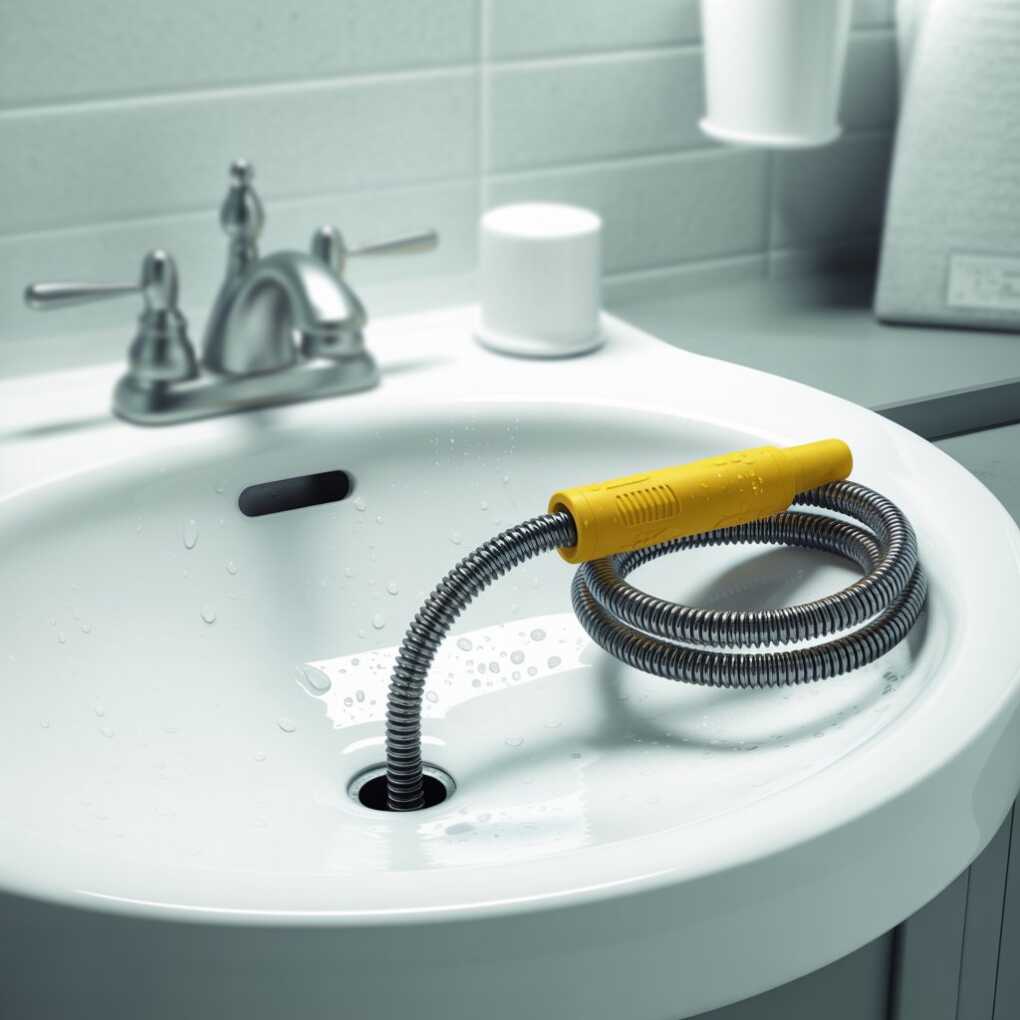Clogged drains can cause frustration, but the right tool makes the job easier. Many people new to plumbing feel unsure about which type of drain snake to use for different clogs. Choosing the right drain snake depends on the type of drain, the severity of the blockage, and how much control a beginner wants over the process.
Some tools work best for simple sink or shower clogs, while others handle tougher blockages in toilets or deeper pipes. By understanding the main types of drain snakes and how they work, anyone can handle small plumbing issues with more confidence and less guesswork.

Hand-Cranked Plumbing Auger
A hand-cranked plumbing auger uses a flexible cable and a turning handle to break up clogs. The user feeds the cable into the pipe, then rotates the crank to push through or grab the blockage. This makes it a simple tool for someone new to plumbing.
It works best for sinks, tubs, and shorter drain lines. The manual design gives the user more control, but it also requires more effort compared to powered models. For small household jobs, it often provides enough strength without extra equipment.
Larger or deeper clogs may need a longer cable. In those cases, a powered tool such as a 100ft drain snake can reach farther into the line. Beginners usually start with a hand-cranked auger, then move to longer or motorized options if the clog proves too difficult.
This type of auger remains a cost-effective choice for common household drains. It gives new users a chance to learn basic plumbing techniques without a steep learning curve.
Closet Auger for Toilets
A closet auger is a tool made specifically for toilets. It has a stiff cable with a curved guide tube that helps it reach through the toilet’s trap without scraping the porcelain. This design makes it safer for the bowl compared to a standard drain snake.
Plumbers often use a closet auger to break apart or pull out tough clogs that a plunger cannot clear. The handle allows the user to crank the cable forward so it can push through blockages. As a result, it works well for items stuck deeper in the toilet drain.
Unlike general drain snakes, a closet auger is not meant for sinks or tubs. Its length and shape limit it to toilet use, but that focus makes it more effective in this setting. For someone new to plumbing, it provides a straightforward way to deal with stubborn toilet clogs.
This tool is available in manual and power-assisted versions. Beginners usually start with the manual type since it is simple, affordable, and easy to control.
15-Foot Manual Drain Snake
A 15-foot manual drain snake works well for small household jobs. It reaches far enough to clear clogs in sinks, tubs, and showers without being too long or hard to handle. Beginners often find this size easier to control compared to longer cables.
This type of snake usually has a hand crank that feeds the cable into the pipe. The user pushes the cable forward and rotates it to break up or hook onto the clog. Because the tool is manual, it gives more control and reduces the chance of damaging pipes.
Most 15-foot snakes fit drains that are one to two inches wide. They are not designed for large sewer lines but can handle common blockages in bathroom or kitchen drains. This makes them a practical starting tool for someone new to plumbing.
The shorter length also makes storage simple. It coils neatly and takes up little space, so it can be kept in a cabinet or toolbox until needed.
Electric Drain Snake for Deep Clogs
An electric drain snake works well for clogs that sit farther down the pipe. It uses a motor to rotate the cable, which helps break apart or pull out blockages that a manual tool may not reach. This makes it useful for tougher jobs in sinks, tubs, or even main lines.
Compared to a hand-crank model, the electric version requires less physical effort. The motor does most of the work, so the user can focus on guiding the cable and controlling the speed. This feature can save time and reduce strain during longer tasks.
However, beginners should practice caution. The added power can damage pipes if used incorrectly, especially in older plumbing. It is best to start slowly, feed the cable carefully, and avoid forcing it through bends.
For homeowners who face frequent or stubborn clogs, an electric drain snake provides a practical solution. It reaches deeper, clears larger blockages, and makes the job more manageable than manual tools.
Flexible Shower Drain Snake
A flexible shower drain snake works well for beginners because it bends easily through narrow pipes. Its slim design allows it to reach hair and soap buildup that often causes clogs in showers. This makes it more practical than larger, stiffer tools that may not fit.
The tool usually has a coiled tip that grabs or breaks apart debris as it moves through the pipe. By turning the handle, the user can guide the snake deeper and pull out the clog. This process avoids the need for harsh chemical cleaners.
Beginners often find a handheld version easier to control. It provides enough length to reach most shower blockages without requiring much strength. Therefore, it offers a simple and affordable way to clear drains at home.
In addition, the flexible design reduces the risk of damaging pipes. A stiff tool might scratch or get stuck, but a smaller snake can move smoothly through curves. This makes it a safer choice for someone new to plumbing.
Conclusion
A beginner should match the drain snake to the type of clog and pipe size. A small hand-crank model works well for sinks and tubs, while a medium cable auger can address deeper blockages.
They should avoid using a heavy-duty tool on small household drains, as this may cause damage. Instead, starting with a simple manual snake provides enough reach and control for most common problems.
By choosing the right size and style, a new user can clear clogs effectively without unnecessary cost or risk.
